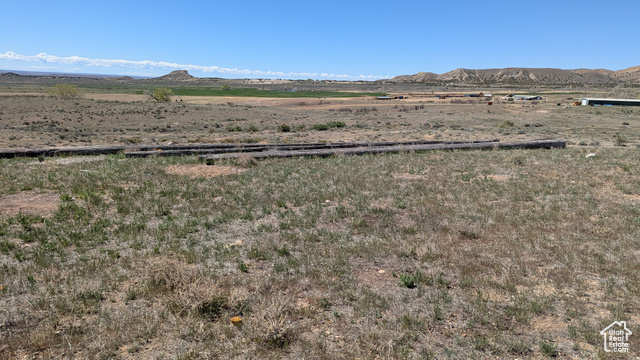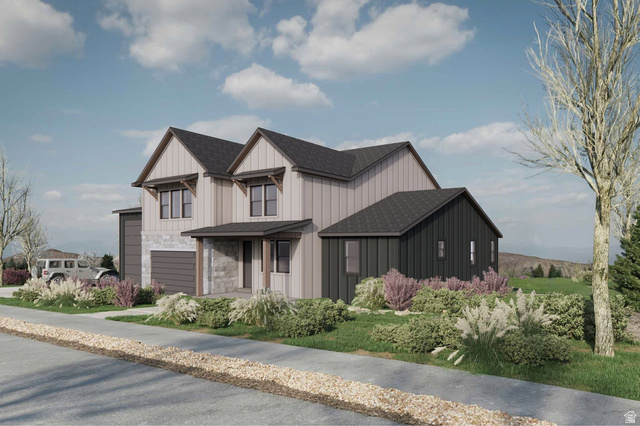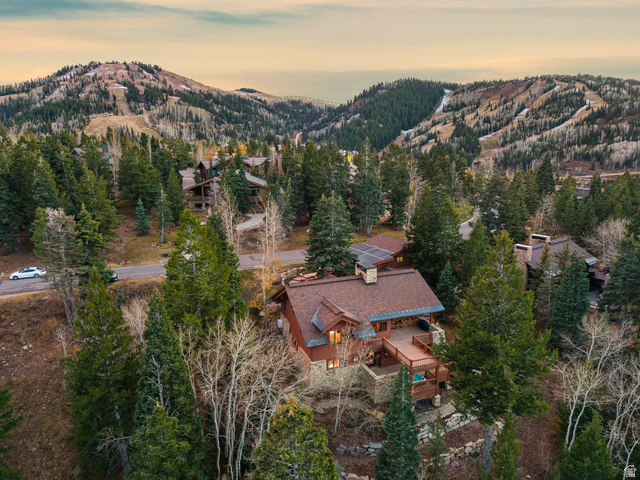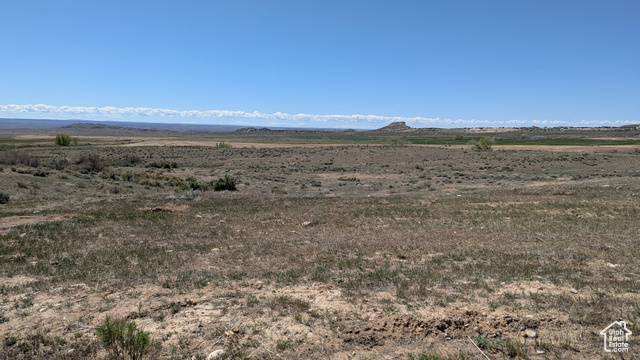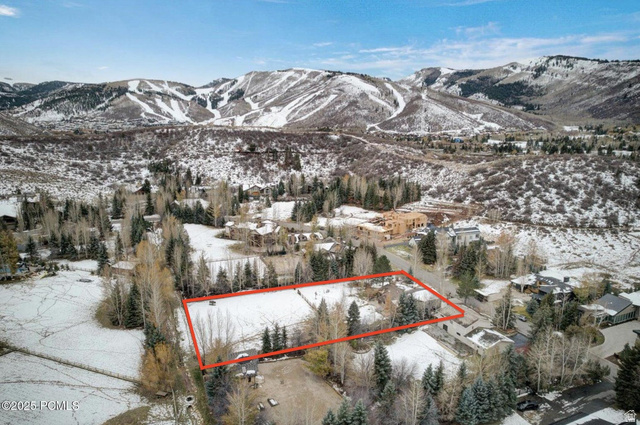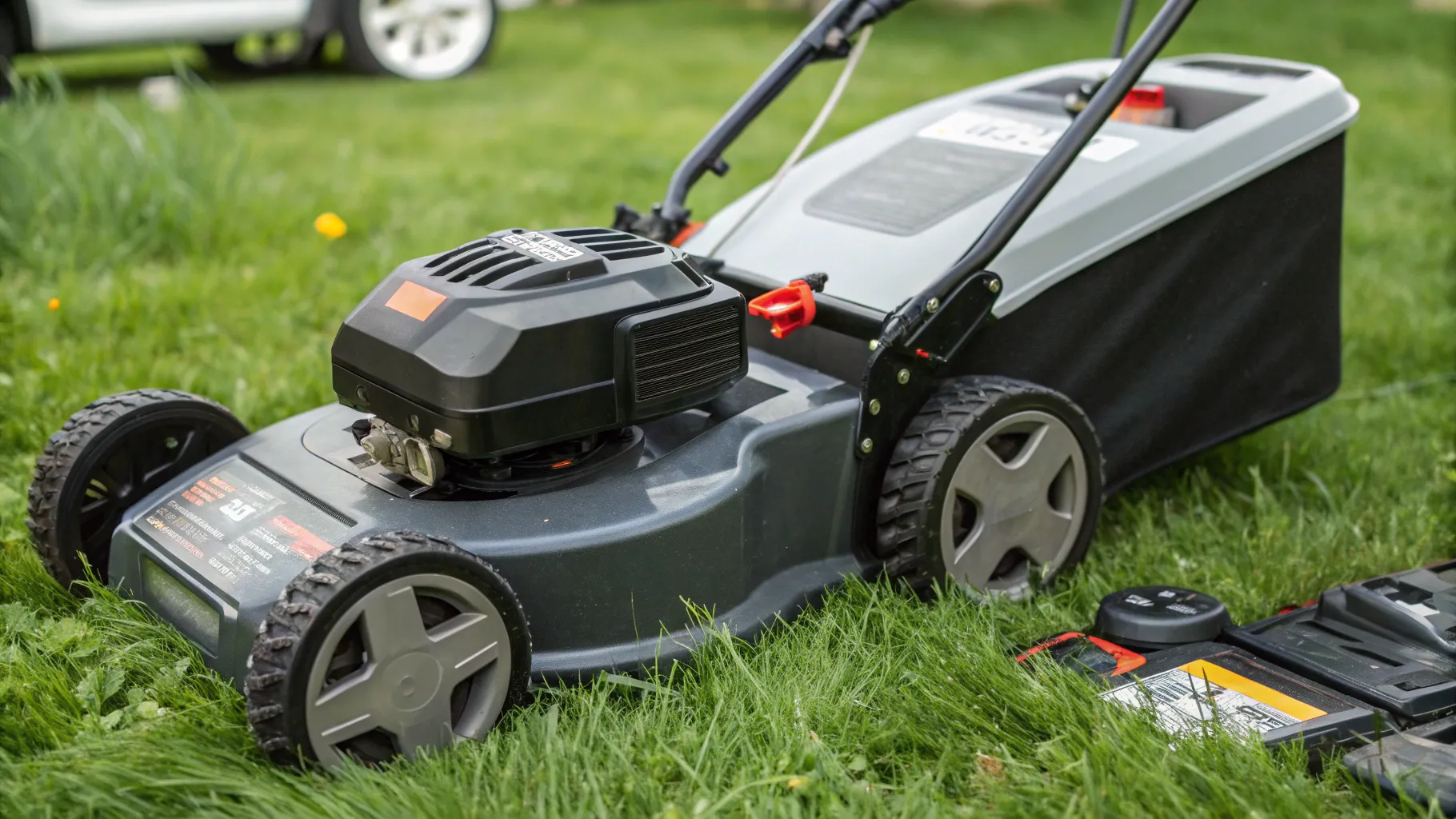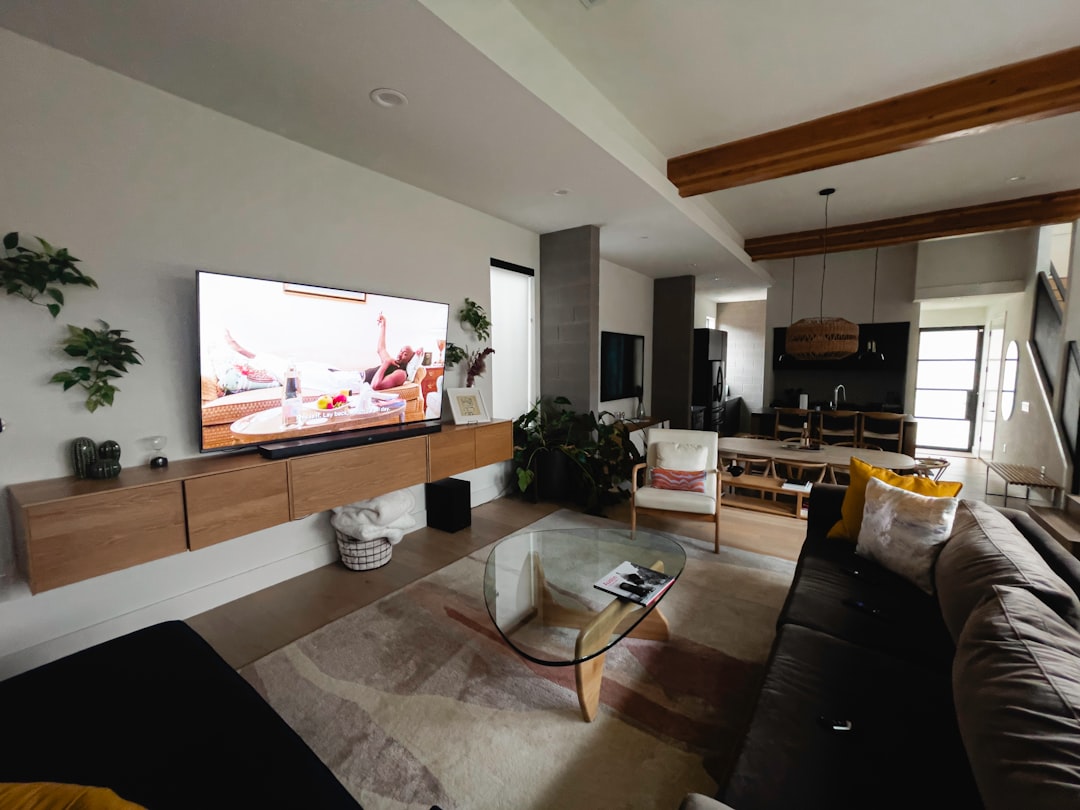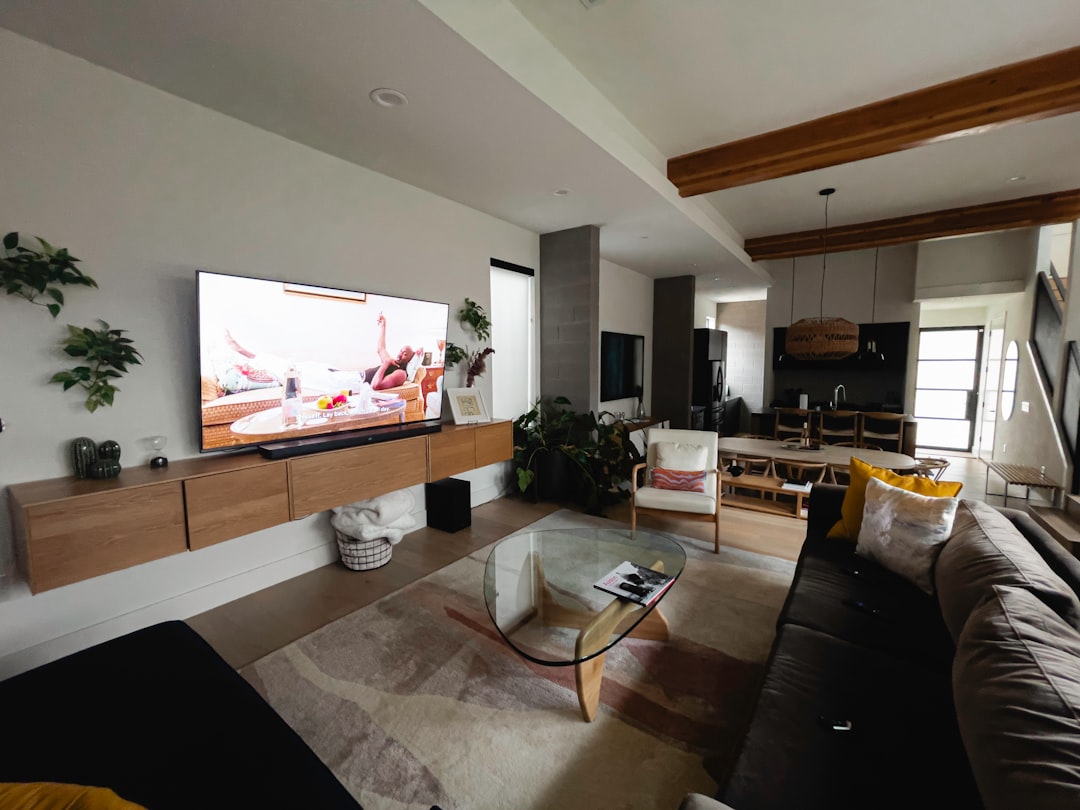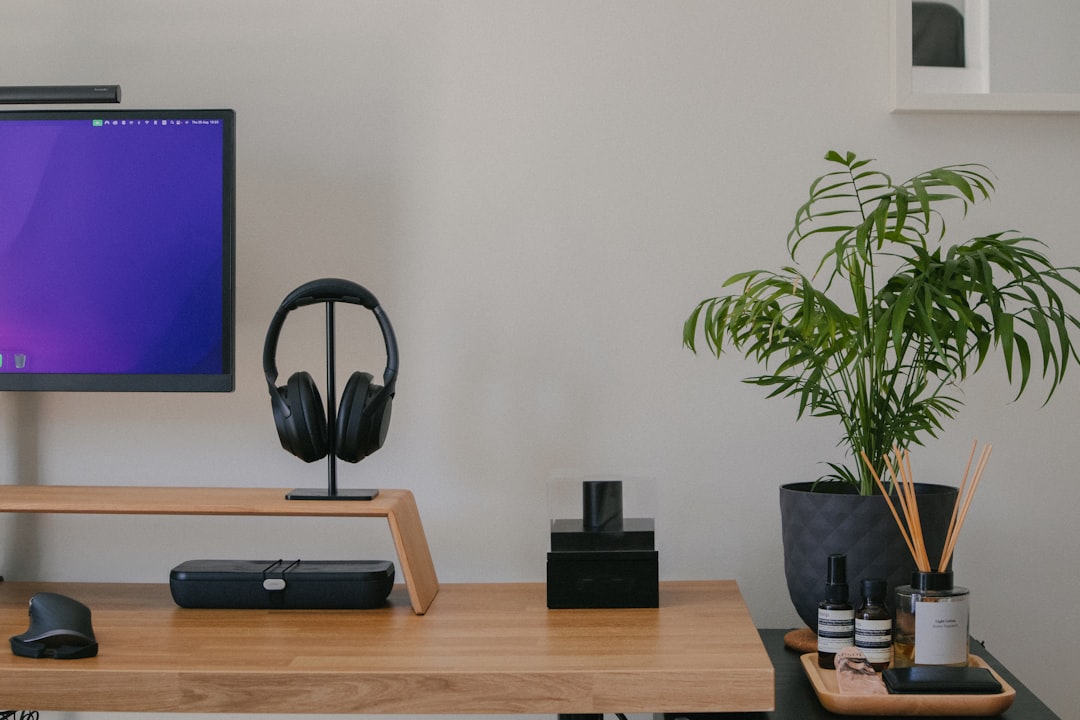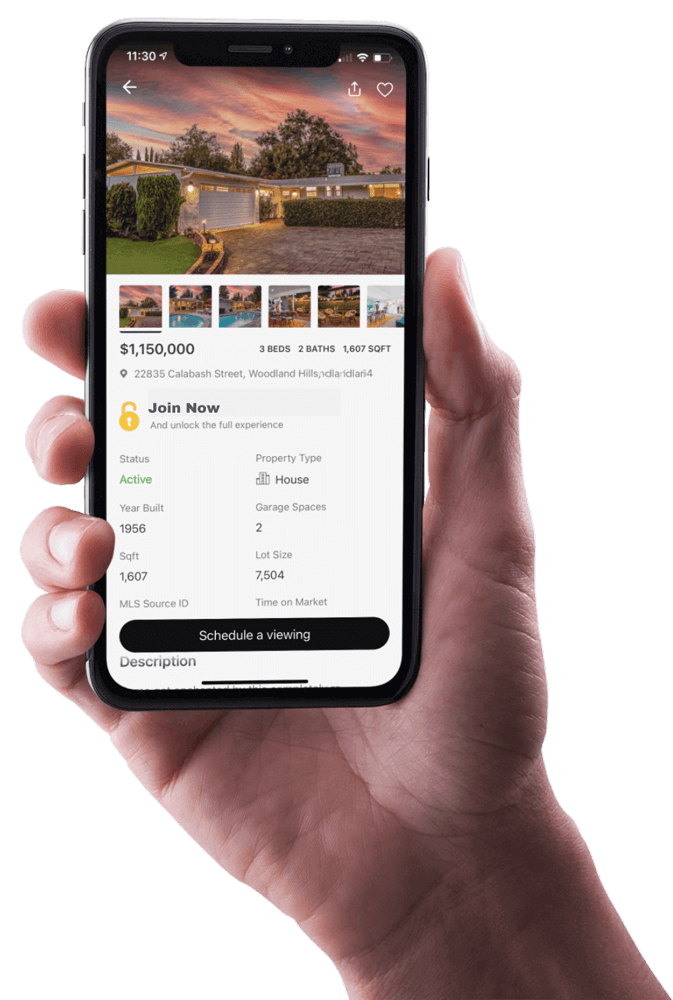In-depth comparison of eight battery lawn mowers—prices, runtime, deck build, noise levels, and our top picks for value, performance, and best overall.
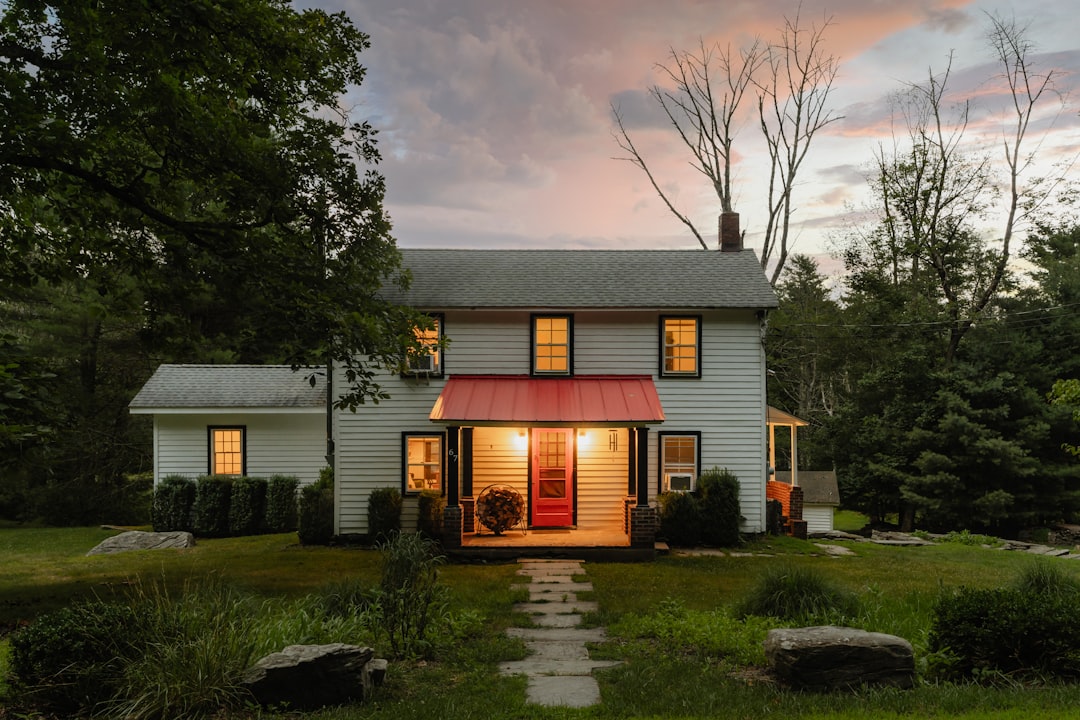
Photo by Clay Banks on Unsplash
Permanent outdoor LED puck lights are transforming how homeowners approach seasonal lighting, architectural accenting, and year-round curb appeal. This detailed comparison evaluates three popular permanent outdoor lighting systems—GOVEE Pro, Lumary Eve Lights Max, and the Eufy E22—across design, installation, electrical characteristics, control systems, and real-world performance. The goal is to provide an objective, fact-driven guide that helps readers choose the best value and the right product for their home, budget, and installation constraints.
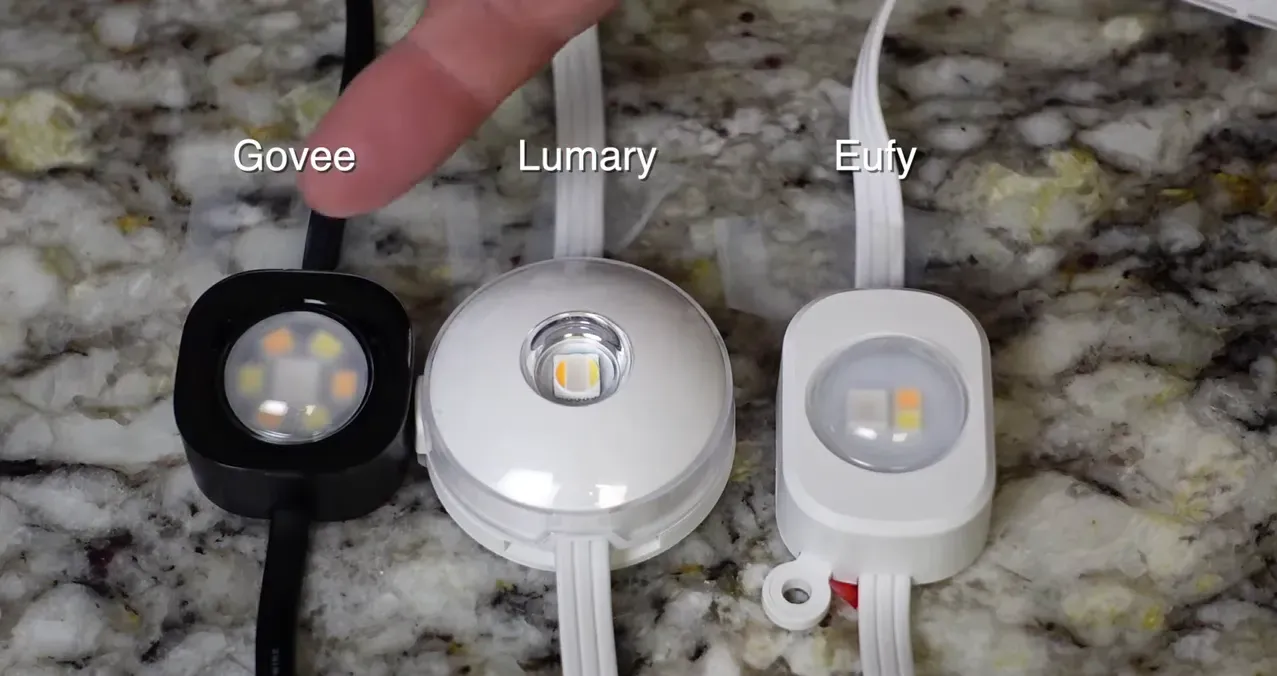
Quick Overview: What these systems are and who they suit
All three products are permanent, low-voltage (36V) outdoor LED string systems designed to be mounted along eaves, soffits, fascia, and around windows or landscaping. They each consist of small "puck" style lights spaced along a weatherproof cable that connects to a controller and a 36V power supply with an AC input (100–240V). These systems are intended for homeowners who want a semi-permanent lighting solution without running mains-voltage fixtures or installing complex low-voltage transformers.
Broadly speaking:
- GOVEE Pro targets users looking for a compact puck, cuttable strings, and the longest supported run per controller.
- Lumary Eve Lights Max targets users seeking a sharp beam and a high density of pucks per run for more granular coverage.
- Eufy E22 (referred to here as Eufy) aims for a balance of brightness per puck and integrated app features, with different kit lengths that emphasize modular purchase options.
What to expect from this comparison
The comparison breaks down into the following sections: physical design and LED arrangement; beam quality and color mixing; spacing, coverage, and counts per run; installation hardware and mounting options; power supplies and electrical specs; controllers and control options; cutting and splicing features; warranty and life expectancy; pricing and value; real-world observations during daytime and nighttime testing; and practical recommendations. Each section includes facts and performance impressions so readers can weigh trade-offs relevant to their projects.
Physical design and LED arrangement
Physical appearance matters more than purely aesthetic reasons; it also dictates beam shape, diffusion, and how visible the wiring will be on a home's exterior. The three pucks differ in size, LED arrangement, and whether a diffuser is present behind the lens.
GOVEE Pro: The GOVEE Pro puck is the smallest of the three. It features an RGB LED chip at the center, surrounded by three additional LEDs. Two groups provide warm white and daylight output. The compact design helps create a tight beam and makes the wires less visible when installed along eaves.
Lumary Eve Lights Max: Lumary’s puck consolidates the RGB chip tightly in the middle with warm white and daylight elements adjacent, in a compact single-chip cluster. There is no diffuser behind the lens on Lumary, which allows the LED chip structure to be visible through the lens and contributes to a very sharp beam angle and high contrast cones on the mounting surface.
Eufy E22: The Eufy puck is larger than GOVEE and Lumary. Its RGB LED chip is offset to one side, with warm and daylight LEDs on the other side. Eufy adds a diffusion layer under the lens which softens the beam edges and helps the white LEDs blend smoothly. The larger size and diffuser yield a softer, more blended cone of light compared with the tighter, more defined cones of GOVEE and Lumary.
Design implications
Smaller pucks like GOVEE’s reduce visual clutter when installed on light-colored trim, and tighter LED clusters tend to produce sharper, more defined beam cones—useful when a precise spotlight or dramatic architectural accent is desired. Conversely, larger pucks with diffusion, like Eufy, create gentler overlaps across a façade and can be easier on the eye when close proximity of lights would otherwise create intense hotspots.
Beam quality and color mixing
Beam quality depends on LED arrangement, lens shape, and diffusion. Two important visual qualities are cone sharpness (how defined the edge of the beam is) and white blending (how seamlessly warm and cool white LEDs blend when used together).
Lumary: Produces the sharpest cone of the three because the LED cluster is tightly packed and there is no diffuser layer. The sharp cone creates high-contrast circular spots on the wall or eaves, which many homeowners find striking for highlighting architectural details. One practical consequence is the potential to notice haloing or ring effects when setting whites to a midpoint between warm and cool; this occurs because the separate warm and daylight LEDs are slightly separated and both illuminate in the mixed white state.
GOVEE Pro: Also produces a tight, high-contrast cone due to compact LED placement and limited diffusion. GOVEE’s design combines RGB with separate white LEDs—when white mixing occurs, the blend is generally smooth, creating a sharp central cone with clear edges. GOVEE’s pucks are slightly smaller, contributing to a more discreet wire profile along the installation line.
Eufy E22: Produces the softest cone because of its diffuser and offset LED placement. The diffuser helps the warm and daylight LEDs blend seamlessly, producing white tones that appear uniform rather than showing dual-source ring effects. This results in softer transitions between colors and less pronounced hotspots where cones overlap.
Practical effects of beam differences
Beam sharpness matters in targeted applications—accenting columns, windows, or architectural trim where defined spots provide visual interest. Softer diffusion works well for general ambient accenting across larger expanses, such as along long eaves where overlapping cones create a uniform wash of color. Consider the look desired: crisp pinpoints or smooth color washes.
Spacing and coverage: lights per foot and layout planning
Spacing determines how many pucks are needed and how intense or uniform the output appears. The three systems evaluated use different spacing per kit length, which directly affects selection and cost.
- GOVEE Pro & Eufy E22 (150 ft examples): Both systems provide roughly 90 lights over a 150-foot string when configured with the same total run length in the tested sets. For an installation where tight density is not critical, these spacing intervals give broader cones that overlap into a continuous wash of light on many facades.
- Lumary Eve Lights Max (150 ft example): Provides approximately 120 lights over a 150-foot run—roughly 16.5-inch spacing between pucks. This higher puck density offers finer control and a more granular spread, producing more evenly lit surfaces and less dark space between cones.
Plan layout by mapping the run length around the house perimeter, noting soffit transitions, gutter profiles, and corner terminations. Higher puck density gives more flexibility to control color and brightness across complex façades, but increases material cost and labor for installation.
Installation methods, hardware, and real-world mounting tips
Installation approach and included hardware vary considerably and have significant effects on long-term durability and the need for maintenance. Practical mounting considerations include adhesive backing adhesion, clip or screw methods, cushion or foam backing, and the ability to reposition or replace elements without tearing trim or siding.
GOVEE Pro mounting: GOVEE uses 3M VHB (very high bonding) tape on the back of each puck. The tape is thin and best suited for smooth, non-porous surfaces. Because outdoor temperature cycles (hot/cold expansion, moisture) can degrade adhesive performance, GOVEE includes small physical mounting clips that are intended to be installed adjacent to each puck and screwed in for long-term retention. The foam on the clip assists in creating a more robust anchor. The recommended approach is to use both the tape for positioning and the clip screws for permanent retention—otherwise pucks can come loose over time and require reinstallation.
Eufy E22 mounting: Eufy also uses VHB tape but integrates a screw attachment into the puck itself. The puck mounts to its backing and a screw can be driven through a dedicated hole in the light housing. This avoids the need to locate separate clips during installation but does have limitations when mounting to irregular surfaces such as textured vinyl or stucco; the screw hole might not align or seat flush where desired. The direct screw method simplifies installation on consistent, flat trim but can be less adaptable when trim width varies or the owner wants precise puck spacing.
Lumary Eve Lights Max mounting: Lumary’s puck design includes a thicker PE (polyethylene) foam backing that provides cushion and some tolerance for irregular surfaces; however, the adhesive strength of this foam is lower than VHB tape. Lumary’s system adds a sliding mount mechanism: after the puck is adhered to the surface, the puck is slid off the mount, a screw is driven into the mount, and then the puck is slid back on to lock it in place. This lets installers use the adhesive to position the mount before committing to the screw, but like Eufy, the screw hole position may not match preferred spacing in all situations. Lumary also provides external wire clips (similar to GOVEE’s clip) so installers can choose between screw-only mounting or the combination of screw and wire clip retention.
Mounting recommendations
For long-term reliability, a combination of adhesive positioning and mechanical fastening is recommended. On smooth trim, a thin VHB tape plus a small screw-in clip provides the best of both worlds: initial positioning simplicity and long-term mechanical retention. On rough or irregular surfaces, use the mount method that allows the screw to capture solid substrate rather than relying solely on adhesive. When mounting on rented properties or surfaces that cannot be pierced, consider removable mounting systems such as exterior-rated adhesive clips with high-shear strength—but be aware of the increased chance of failure in extreme climates.
Power supplies and electrical characteristics
All three systems operate on 36V output and accept an AC input range of 100–240 volts, which makes them compatible with typical household circuits worldwide without a step-up or special transformer. Each brand uses an IP67-rated power supply, meaning the supply is weather-resistant and can handle immersion for short periods—this rating ensures outdoor compatibility, though placement under a protected soffit or in a vented box remains best practice to extend life.
- GOVEE Pro power supply: Rated at 3 amps output at 36V. GOVEE does not include screw mounting points on the power supply housing, so installers should secure the power supply with external clips or mount it in a fixture box. The GOVEE string supports the longest continuous run on a single controller—up to 200 feet, according to manufacturer specs.
- Lumary Eve Lights Max power supply: Rated at 2.6 amps at 36V. The Lumary power supply includes mounting points so it can be easily fastened to a soffit or substrate. Lumary’s supported maximum run length is approximately 158 feet for their configuration.
- Eufy E22 power supply: Rated at 2 amps at 36V and includes mounting points on the housing. Eufy’s specification supports up to nine strings for a total of around 150 feet depending on configuration.
Why power-supply amp rating matters
The amp rating determines how many pucks and how long a run can be driven before voltage drop or thermal limits are reached. Higher amperage allows longer runs or higher brightness without overloading or reducing color accuracy toward the end of the string. Voltage drop is also affected by wire gauge—the GOVEE string uses thinner wire that is more discreet but may be more susceptible to voltage drop over very long runs. However, GOVEE’s higher amp supply and cuttable strings provide flexibility by allowing mid-run splices and parallel feeds when necessary.
Wiring, plug standards, and splicing options
Wiring differences influence flexibility during layout, the visual impact of cabling, and field modification capabilities. The strings are 3-conductor—two conductors for power and one for data—so the controller on one end transmits color and pattern information down the string.
Wire visibility and gauge: GOVEE uses a thinner gauge wire that is less visible on exteriors, blending better with trim. Lumary and Eufy strings use a thicker standard wire felt to be more robust; the thicker wire may be more noticeable but can handle mechanical stresses better.
Splicing and cutting: GOVEE Pro uniquely ships a splicing kit that makes cutting and re-terminating strings straightforward and supported by the manufacturer. The splicing kit joins the three conductors (commonly color-coded) into a watertight connector and allows users to shorten segments or create custom runs without relying on unsupported hacks. Lumary and Eufy strings are cuttable in the field but do not include a manufacturer-friendly splicing kit. Cutting them requires DIY splicing know-how and voids warranty or manufacturer support in many cases.
When splicing matters
Splicing capability becomes critical for large or irregular houses that require runs longer than a single string or where the layout necessitates multiple shorter runs connected by discreet feeds. GOVEE’s included splice kit eliminates one barrier to building custom layouts and removes the need to buy third-party waterproof connectors or rehearse soldering in the field. For those who plan to split strings to reduce density or to balance runs at corners and roof transitions, choosing a product with official splicing support reduces installation risk.
Controllers and control options: app, voice, remote, and scene design
Control flexibility has a large impact on user experience. All three systems provide app-based control with standard color, scene, and schedule capabilities as well as voice control via compatible smart assistants. There are distinctions that influence convenience and how users create scenes across an entire house.
- GOVEE Pro: App-controlled with voice control integration. The system relies on a single button on the physical controller box for manual power cycling. GOVEE has a mature ecosystem of app scenes and automation and supports the longest single-run length per controller.
- Lumary Eve Lights Max: Lumary differentiates itself by including a dedicated physical remote control in the box in addition to app and voice control. The remote allows for quick manual operation without opening an app, which can be convenient for non-tech household members or for staging quick scenes. The physical controller is slightly thicker and mounts only via clip or external clips—no adhesive on the physical controller itself.
- Eufy E22: Eufy is app and voice controlled but does not include a physical remote. The Eufy app includes a unique house-mapping preview that shows what a selected scene will roughly look like on a façade or house diagram, which helps users visualize how a pattern or scene will appear when deployed across a run.
These control differences impact usability: a physical remote can be useful for instant control during parties or holiday setup, while a visualization preview in the app helps plan and preview complex color scenes before activating them on the home.
Color temperature ranges, lumen output, and rated life
Color temperature range and lumen output are important when balancing ambiance with perceived brightness and longevity expectations.
- GOVEE Pro: Manufacturer-rated at 50 lumens per puck with a white color range from 2700K (warm) to 6500K (cool). Rated life is 50,000 hours and the product carries a three-year warranty. GOVEE also supports cutting strings and has the longest single-controller support up to 200 ft.
- Eufy E22: Reported to be 90 lumens per puck and rated for 55,000 hours. Eufy claims an extended white range from 1500K to 9000K, though practical observation may differ from claimed output. Warranty information was not readily available in packaging or website material referenced in the evaluation.
- Lumary Eve Lights Max: Rated at 60 lumens per puck with a white color range from 2200K to 6500K and a rated life of 15,000 hours. Lumary includes a one-year warranty and supports a maximum of approximately 158 feet per controller for denser installations with up to 120 pucks in a 150-foot configuration.
Interpreting lumens and lifetime ratings
Lumens measure total light output perceived by the human eye. Higher lumen ratings per puck indicate brighter pucks, but perceived brightness across a façade depends on puck density and beam shape. For example, Eufy’s higher per-puck lumen claim could translate into brighter single-point accents, but if the beam is diffused, the visual intensity may still read as softer across a larger area. Lifetime ratings quantify expected operational hours until lumen depreciation; longer rated lives indicate longer useful periods but are often optimistic based on ideal conditions. Warranty length is also a proxy for manufacturer confidence and support availability.
Real-world performance: daytime and nighttime observations
Laboratory specs tell part of the story; real-world testing demonstrates how differences translate to perceived brightness, color mixing, and overall aesthetic impact after installation. Two types of tests provide useful insight: a controlled indoor cone-sharpness comparison and a practical nighttime evaluation of how cones overlap at distance.
Cone sharpness test (indoor): When placed side-by-side and set to individual colors (red, green, blue), Lumary and GOVEE both produce well-defined, high-contrast cones. Lumary appears to have the sharpest cones overall consistent with its lack of diffusion and tight LED grouping. GOVEE’s cones are similarly defined, while Eufy shows noticeably softer edges due to diffusion.
White mixing: On mixed whites, Eufy and GOVEE show smooth blending between warm and daylight LEDs. Lumary sometimes produces a subtle halo effect in the mid-white range—this is the visible consequence of separate white LEDs slightly separated on the chip and no diffuser to homogenize the output. For most homeowners who prefer distinctly warm or distinctly cool whites, this halo is minor in day-to-day usage. For those who want exact midpoints or very uniform white across wide surfaces, this effect might be noticeable.
Nighttime facade test: When mounted on a 12-foot 2x4 and attached to a soffit for a real-world night test, Lumary’s pucks create very strong, sharp cones near the top of the wall where cones are less overlapped. Down the facade where cones overlap, differences in sharpness become less distinct, and the visual effect is dominated by overall brightness and color uniformity. Lumary looked brightest on green settings, while Eufy’s blues appeared deeper and more saturated—likely a function of Eufy’s RGB mixing and diffusion. GOVEE provided solid, consistent output and the discreteness of the wire and puck made for a tidy installation profile.
Warranty, support, and durability considerations
Warranty length and manufacturer support are key elements in evaluating long-term value. Longer warranties typically indicate stronger manufacturer confidence and better post-purchase support options.
- GOVEE Pro: Offers a three-year warranty with a 50,000-hour rated life. GOVEE also supplies a splicing kit and explicit cutting support, which demonstrates an intent to support flexible installations.
- Eufy E22: Reports 55,000 hours of rated life but warranty information was not explicitly found on packaging or website materials consulted during the evaluation. This ambiguity may require potential buyers to contact the manufacturer directly for clarity.
- Lumary Eve Lights Max: Includes a one-year warranty and a 15,000-hour rated life, which is shorter than competitors’ rated lives and may influence decisions for long-term installations.
Durability also depends on environmental exposure, installation method quality, and whether mechanical mounting is used in addition to adhesive. Mechanical fastening reduces the chance of pucks loosening over time from thermal expansion, moisture, and adhesive degradation.
Price and value comparison
Price varies by kit lengths and included components, which affects cost per foot and cost per puck. Price comparisons should consider included accessories like splicing kits, remotes, mounting clips, and warranty length.
- GOVEE Pro (150 ft example): At the time of testing, a 150 ft set (90 lights) was priced around $550 on Amazon. Included benefits: splicing kit, three-year warranty, 50,000-hour rating, and 200 ft single-controller support.
- Eufy E22: Eufy offers kit variations, with a 100 ft kit around $300 and 50 ft extension kits around $150, providing modularity in purchasing. The Eufy E22 lists higher per-puck lumen claims but warranty details were unclear during research.
- Lumary Eve Lights Max: The list price cited was $650, but promotions and coupons can reduce the effective price (for example, a $120 coupon decreased the effective price to roughly $530). Lumary includes a remote and has higher puck density on comparable lengths, which increases upfront material cost but yields denser coverage.
Assessing value
Value is a function of price, reliability, features, and installation flexibility. GOVEE’s cuttable strings and splicing kit provide clear installation flexibility that reduces labor or custom cable expenses, which can be a significant cost advantage for complex homes. Eufy offers modular kit purchasing and potentially higher per-puck brightness, which could reduce the number of pucks needed for certain looks. Lumary provides a denser configuration that can produce smoother washes of light at the expense of higher puck counts and potentially more labor.
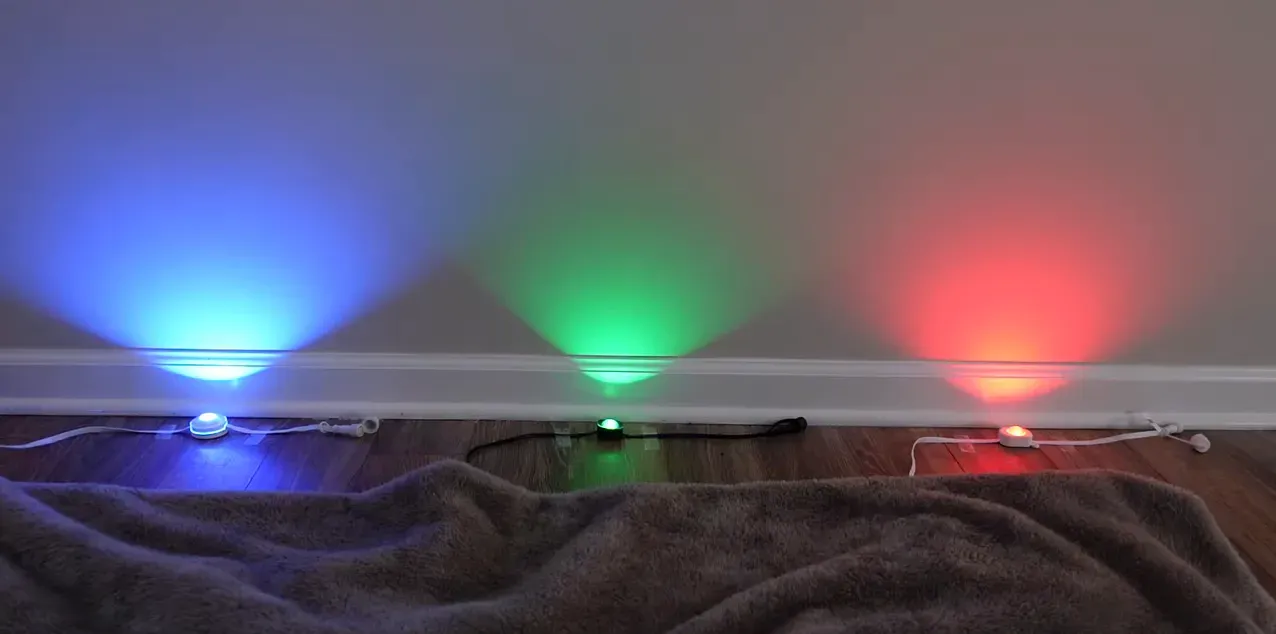
Installation checklist and tips for a durable setup
- Measure and map the run: Create a full perimeter map including corner-to-corner distances, soffit profiles, gutter obstructions, and potential power supply mounting locations. Account for controller location at one end of the run and plan feed-throughs at corners.
- Choose mounting points carefully: Prefer smooth, clean surfaces for VHB tape, and use mechanical clips in addition to tape for long-term durability. For textured or irregular surfaces, use screw-based mounts or the sliding mount approaches provided by some manufacturers.
- Mind the power supply placement: While IP67-rated supplies withstand weather, locate them under protected soffits or in ventilated boxes where possible to minimize temperature extremes and direct exposure to rain or debris.
- Think about wire concealment: Use thinner-gauge wire for less visual impact on trim lines when available, and secure cables with color-matched clips or paintable raceways if visibility is a concern.
- Test before final fastening: Power the controller and verify color, scene, and brightness before screwing clips or finalizing mounts. This reduces rework if a puck or connector fails.
- Consider future changes: Use splicing kits or leave accessible junction points if future extensions or modifications are likely. GOVEE’s included kit simplifies this planning step.
Who should choose which system?
Choice depends on priorities such as beam sharpness, density, installation flexibility, control options, and budget.
- Choose GOVEE Pro if: cutting and splicing flexibility is important, a discrete wire profile is desired, and a longer supported run per controller is needed. The three-year warranty and splicing kit add installation confidence for complex homes.
- Choose Lumary Eve Lights Max if: the priority is high-density puck spacing and the sharpest cones for accenting architectural features. Lumary’s included remote appeals to those who want instant physical control in addition to app-based features.
- Choose Eufy E22 if: a softer, more blended look is preferred and modular kit purchasing (100 ft / 50 ft increments) better matches the property layout. Eufy’s softer cone and deeper blues can be appealing for certain decorative aesthetics where a gentle wash is desirable.
Pros and cons summary
GOVEE Pro
- Pros: Compact puck and less visible wiring, included splicing kit, long single-run support (200 ft), 50,000-hour rated life, three-year warranty.
- Cons: Thin adhesive backing meant for smooth surfaces—requires inclusion of mechanical clips for durability; some users may prefer a softer cone depending on the aesthetic desired.
Lumary Eve Lights Max
- Pros: Very sharp beam angles and high puck density (good for even coverage), included remote control, denser layout for finely tuned accenting.
- Cons: Shorter rated life (15,000 hours), one-year warranty, potential mid-white halo due to LED placement and lack of diffuser; higher puck counts increase cost for long runs.
Eufy E22
- Pros: Softer blended beams created by diffuser, reported higher per-puck lumens, modular kit sizing for budget-friendly scaling, deep saturated colors in some modes.
- Cons: Larger puck size may be more visible; warranty details and documentation may be less clear; no included remote in the base kit.
Maintenance and long-term reliability
Regular maintenance for permanent outdoor lights should include periodic visual inspections, cleaning lenses to reduce dirt-induced dimming, and checking mechanical fasteners. Adhesive-only installations should be checked after seasonal extremes. For coastal environments or areas with heavy precipitation, extra attention to sealed connectors and protective mounting of the power supply will extend service life. Mechanical clips that avoid compressing wiring or stripping coating are preferred for longevity.
Buying checklist: questions to ask before purchasing
- Is the kit length and puck density suitable for the façade and desired effect?
- Does the product include splicing or cutting accessories if the run must be shortened or reconfigured?
- What is the warranty period and rated LED life?
- Are mounting clips or screw points included and do they fit the substrate type on the home?
- What kind of control does the system provide—app, remote, voice—and how does that fit household needs?
- Does the power supply include mounting points, and is it appropriately weather-rated for the intended placement?
- Are the pucks discreet enough for the intended installation location, and does the beam shape match aesthetic goals?
Practical scenarios and recommendations
When considering which system best fits a specific scenario, match product characteristics to use cases:
- Holiday/seasonal decoration on varied façades: Opt for GOVEE Pro if cutting and splicing are needed to adapt to complex rooflines, and a three-year warranty is desired.
- Frequent scene changes and party use: Lumary’s included remote may be the most convenient for quickly changing colors and scenes without app reliance.
- Continuous ambient accent lighting with soft blends: Choose Eufy for its diffusion and smooth color transitions that minimize hotspots along long runs.
Conclusion: selecting the best fit for the project
Selecting between GOVEE Pro, Lumary Eve Lights Max, and Eufy E22 comes down to priorities: installation flexibility, beam character, puck density, and warranty confidence. GOVEE Pro stands out for installation flexibility and support for cutting and splicing, backed by a three-year warranty and long single-run capability. Lumary offers the tightest beams and the highest puck density for impressively detailed accenting, along with the convenience of a physical remote. Eufy provides a softer, blended aesthetic and modular kit options that suit homeowners seeking a gentle, uniform wash.
Homeowners should balance visual goals against installation complexity and long-term support needs. For intricate homes with many corners and formatting constraints, the ability to cut and splice and to secure pucks mechanically may be the deciding factor. For installations prioritizing the sharpest cones to showcase architecture, put Lumary at the top of the consideration list. For smoother, mood-setting washes and modular purchasing options, Eufy is an attractive alternative.
Finally, regardless of brand choice, adherence to robust installation practices—mechanical fastening in addition to adhesive, protected power supply placement, and an initial test before final fastening—will yield the best long-term performance and minimize callbacks. Homeowners who plan ahead on layout, secure adequate mounting, and select the system that aligns with their desired visual effect will be rewarded with an exterior lighting setup that enhances curb appeal year-round.
Interested in purchasing?
View the product pages on Amazon to compare current kit lengths, prices, and user reviews before making a final selection. Check for available coupons or bundled kits that may reduce cost and provide better value for specific home sizes.
Frequently Asked Questions
Are these systems safe to install outdoors?
Yes, all three systems use IP67-rated power supplies and low-voltage 36V output, which reduces electrical risk compared with direct mains fixtures. Nevertheless, best practice is to place the power supply under a protected soffit or in a ventilated, weather-protected enclosure, ensure connectors are sealed, and mechanically fasten pucks where possible to prevent moisture intrusion and wind-driven displacement.
Can the strings be cut to custom lengths?
GOVEE Pro explicitly supports cutting and includes a splicing kit for re-terminating the three-conductor cable. Lumary and Eufy strings can technically be cut, but neither includes an official splicing kit or manufacturer-supported re-termination method in the standard kit. Users who cut non-supported strings risk voiding warranties if damage occurs during modification.
What is the difference between beam sharpness and diffusion?
Beam sharpness describes how well-defined the edge of the light cone is. Diffusion softens the beam edge, producing a more gradual falloff and more blended overlaps between adjacent pucks. Sharp beams are useful for highlighting architectural details, while diffused beams produce smoother overall washes for general accent lighting.
How important is wire visibility?
Wire visibility affects the visual neatness of the installation. Thinner-gauge wires, such as those used by GOVEE, are less obvious against light-colored trim. Thicker-wired strings are more robust but may stand out more. Concealment strategies include running wires along trim lines, using paintable raceways, or selecting a product with discreet cabling based on trim color and homeowner priorities.
Do these lights work with smart home assistants?
Yes, all three systems provide app control and support voice integration with major smart assistants when configured properly. App features differ, and some offer added conveniences such as remote control or visual scene previews. Verify compatibility with specific voice platforms (e.g., Alexa, Google Assistant) before purchase if voice control is essential.
How long will these lights last?
Rated lifespans vary by manufacturer: GOVEE reports 50,000 hours, Eufy reports 55,000 hours, and Lumary reports 15,000 hours. Real-world lifespan depends on environmental exposure, operating hours, and thermal management. Higher quality housings, proper mounting, and protected power supply placement all extend actual usable life.

